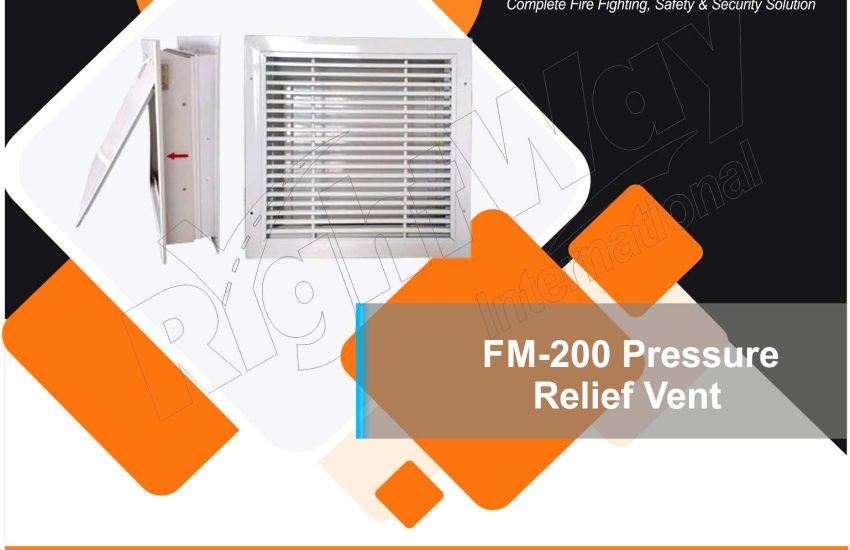The FM-200 Pressure Relief Vent is an essential safety feature in fire suppression systems that utilize FM-200 clean agents. Its primary purpose is to prevent over pressure conditions within the system, ensuring safe and efficient operation. This article explores the function, design, and importance of pressure relief vents in maintaining system integrity.
What is an FM-200 Pressure Relief Vent?
A pressure relief vent is a device that releases excess pressure from a system to prevent potential damage or failure. In FM-200 systems, it allows for the safe discharge of gas when pressure exceeds predetermined limits, thus protecting the storage tank and associated components.
Key Functions of the FM-200 Pressure Relief Vent
Over pressure Protection
The primary function of the pressure relief vent is to prevent the buildup of excessive pressure within the storage tank, which could lead to structural failure or leaks.
Controlled Discharge
When pressure exceeds safe levels, the vent allows for the controlled release of FM-200 gas, ensuring that the system remains within operational limits.
System Integrity Maintenance
By regulating pressure, the vent helps maintain the integrity of the fire suppression system, ensuring that the FM-200 agent is available and effective when needed.
Design Features of the FM-200 Pressure Relief Vent
Durable Construction
FM-200 pressure relief vents are typically made from corrosion-resistant materials, such as stainless steel, to ensure longevity and reliability in harsh environments.
Spring-Loaded Mechanism
Many pressure relief vents utilize a spring-loaded design that allows for automatic activation when pressure thresholds are exceeded, ensuring timely response.
Adjustable Settings
Some vents feature adjustable pressure settings, allowing system designers to customize the pressure relief thresholds based on specific application needs.
Importance of the FM-200 Pressure Relief Vent
Safety Assurance
The pressure relief vent is crucial for ensuring the safety of the fire suppression system. It prevents catastrophic failures that could result from over pressurization.
Operational Efficiency
By managing pressure levels effectively, the vent contributes to the overall efficiency and reliability of the fire suppression system.
Regulatory Compliance
Many fire safety standards and regulations require the inclusion of pressure relief vents in fire suppression systems to ensure safe operation.
Maintenance Considerations
Regular Inspections
Routine inspections should be conducted to check the vent for signs of wear, corrosion, or blockages that could impede its functionality.
Testing
Periodic testing of the pressure relief vent is essential to ensure it operates correctly and effectively when needed.
Cleaning
Keeping the vent clean and free from debris will help maintain its performance and extend its operational lifespan.
Conclusion
The FM-200 pressure relief vent is a vital component of fire suppression systems, providing essential protection against over pressure conditions. Understanding its function, design, and maintenance requirements is crucial for ensuring the reliability and safety of fire protection strategies. By prioritizing the installation and upkeep of pressure relief vents, organizations can enhance their fire safety measures and better protect their assets and personnel from fire hazards.


